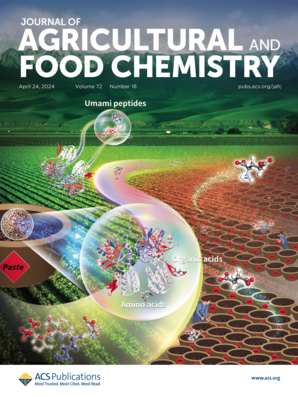Autoinducer-2 Mediated Quorum Sensing Stabilizes Cooperation between Pantoea alhagi and Synthetic Bacterial Communities, Synergistically Improving Drought Tolerance in Wheat.
IF 6.2
1区 农林科学
Q1 AGRICULTURE, MULTIDISCIPLINARY
引用次数: 0
Abstract
Quorum sensing (QS), a mechanism of intercellular communication, plays a crucial role in regulating the microbial community behavior and function. However, the role of the LuxS/AI-2 system in shaping wheat rhizosphere microbiota remains unclear. In this study, the luxS gene, encoding autoinducer-2 (AI-2) synthase, was deleted from Pantoea alhagi LTYR-11Z, resulting in significantly impaired biofilm formation, AI-2 production, and root colonization. A 4-week pot experiment revealed that the wild-type (WT) strain markedly altered the composition, diversity, and structure of rhizosphere bacterial communities compared to the control and ΔluxS mutant groups. Notably, AI-2-mediated microbial recruitment enhanced hybrid biofilm formation. Potting drought experiments showed that AI-2 signaling induced SynCom collaboration, allowing WT+SynCom to activate antioxidant enzymes more efficiently and increase the total N/P concentration in wheat, alleviating drought stress damage. These findings demonstrate that QS acts as a selective force in the rhizosphere microbiome assembly, enriching plant-beneficial species and improving stress resilience.自诱导剂-2介导的群体感应稳定褐藻与合成细菌群落的合作,协同提高小麦的抗旱性。
群体感应(Quorum sensing, QS)是一种细胞间通讯机制,在调控微生物群落行为和功能中起着至关重要的作用。然而,LuxS/AI-2系统在小麦根际微生物群形成中的作用尚不清楚。在本研究中,从泛藻lltr - 11z中删除了编码自诱导物-2 (AI-2)合成酶的luxS基因,导致生物膜形成、AI-2产生和根定植明显受损。一项为期4周的盆栽实验表明,野生型(WT)菌株与对照和ΔluxS突变组相比,显著改变了根际细菌群落的组成、多样性和结构。值得注意的是,ai -2介导的微生物招募增强了杂交生物膜的形成。盆栽干旱试验表明,AI-2信号诱导SynCom协同作用,使WT+SynCom更有效地激活抗氧化酶,提高小麦总氮磷浓度,缓解干旱胁迫损害。这些发现表明,QS在根际微生物群组合中起着选择性的作用,丰富了植物有益物种,提高了植物的抗逆性。
本文章由计算机程序翻译,如有差异,请以英文原文为准。
求助全文
约1分钟内获得全文
求助全文
来源期刊
CiteScore
9.90
自引率
8.20%
发文量
1375
审稿时长
2.3 months
期刊介绍:
The Journal of Agricultural and Food Chemistry publishes high-quality, cutting edge original research representing complete studies and research advances dealing with the chemistry and biochemistry of agriculture and food. The Journal also encourages papers with chemistry and/or biochemistry as a major component combined with biological/sensory/nutritional/toxicological evaluation related to agriculture and/or food.

 求助内容:
求助内容: 应助结果提醒方式:
应助结果提醒方式:


